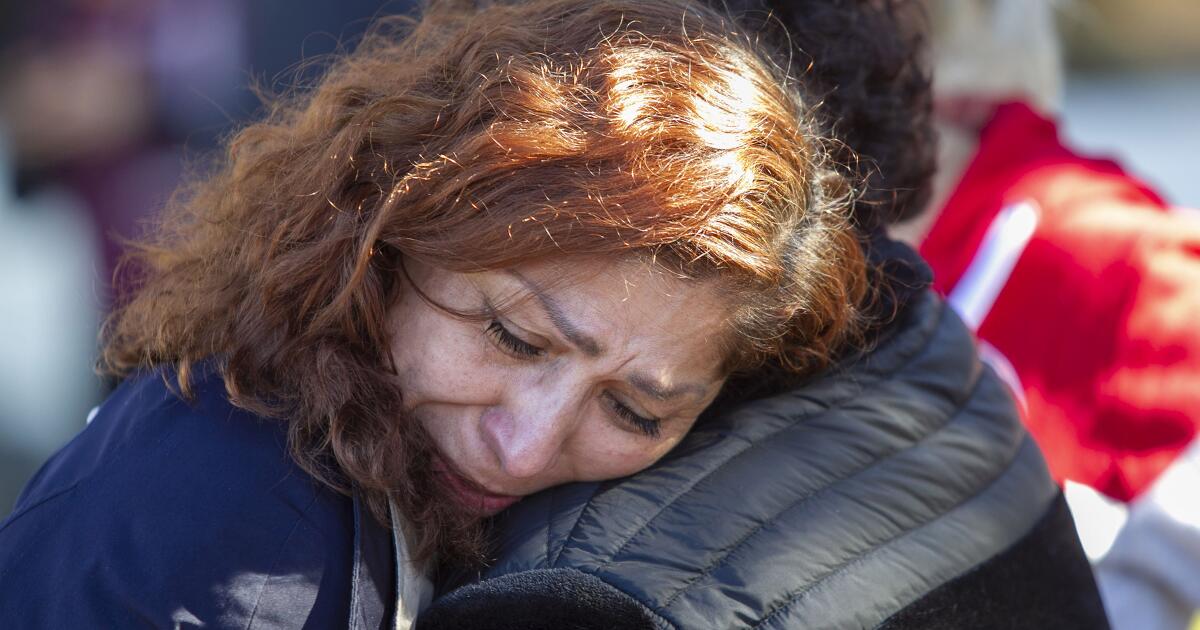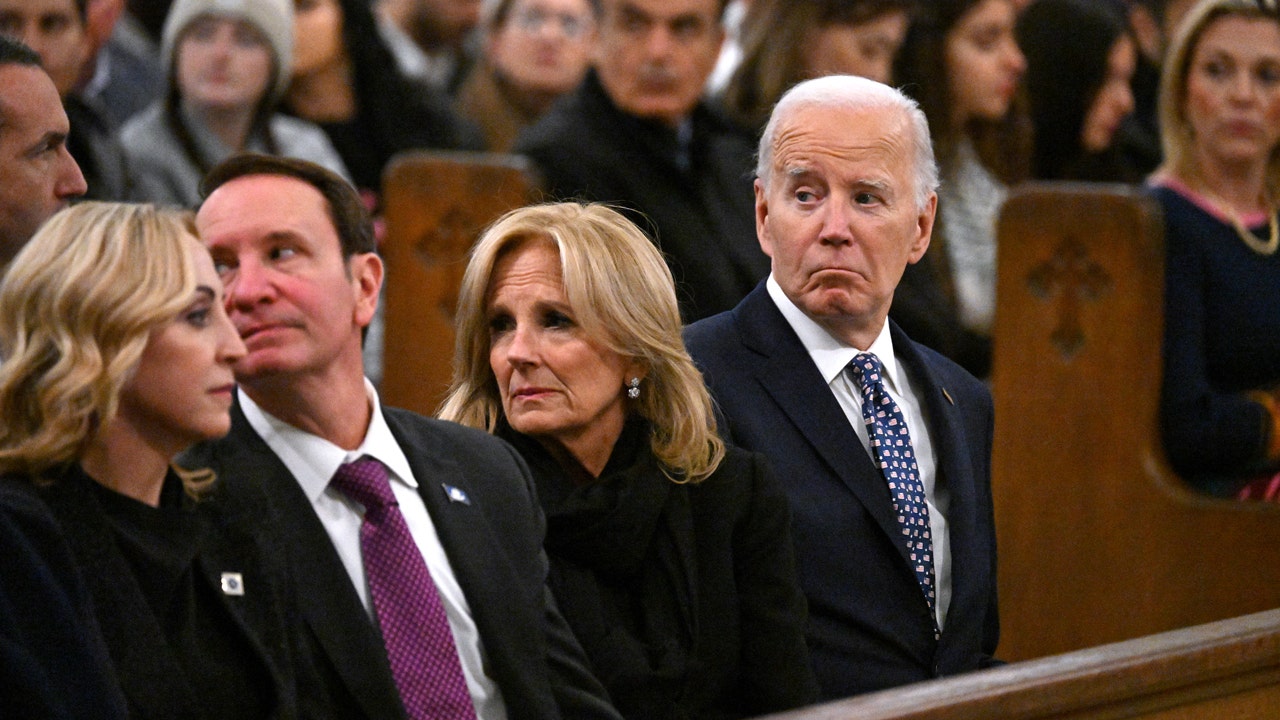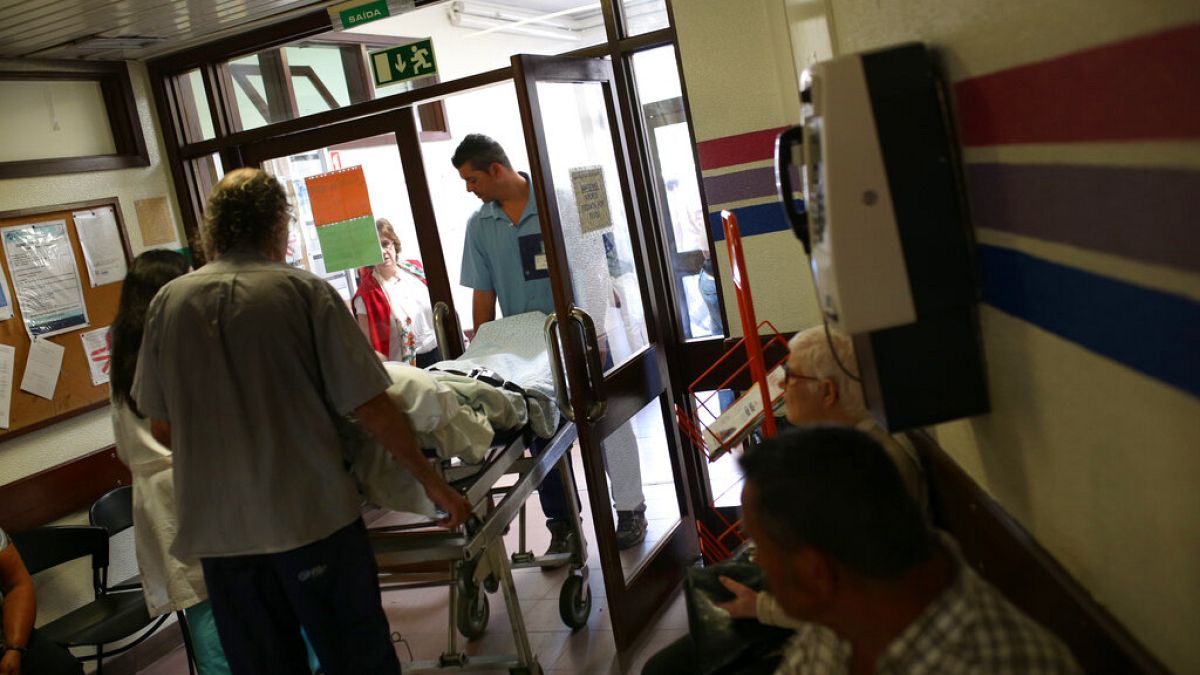Politics
Opinion: Why Trump's plan to deport millions will fall far short of what it promises

Will President-elect Donald Trump’s vow to “launch the largest deportation program in American history” truly keep millions of immigrants out of the country? My research on deportees over the last five years suggests it won’t.
Here’s why: They’ll come back.
One of the migrants I interviewed was deported to a perilous town in northern Mexico, where he found himself in immediate danger on arriving at a bus terminal. Members of a criminal group demanded that he provide a contraseña — a password he didn’t have — or face kidnapping. He ultimately borrowed $1,500 from a friend to pay them off, remain free and make his way back to the United States.
His experience is an example of the risks deportees face in their countries of origin. Those dangers — and the relative safety of the only homes they have — often motivate them to undertake harrowing journeys back to the United States.
Although data on deportees is somewhat limited, the evidence we have shows that people re-immigrate after deportation more frequently than many might expect. In fiscal 2020, for example, the federal government classified 40% of deportations as “reinstatements of removal,” meaning the deportees had reentered the United States after being removed or ordered to leave. A 2019 report by the American Immigration Council, a pro-immigration advocacy group, similarly noted that such reinstatements of removal generally make up 40% of deportations annually. From 2011 to 2020, approximately 1.3 million deportations affected people who had been deported before.
That’s because deportation policies are at best blunt instruments that take little account of the human lives they ensnare. Those who view mass deportation as a solution to unauthorized immigration ignore the deep roots, sense of belonging, family ties and resolve that drive people back to the country they call home.
Undeterred by deportation, people I’ve interviewed have found ways to return to the United States with or without permission. Their stories reveal the rarely discussed truth that deportation is not necessarily the end of migration; it is often a temporary, futile interruption.
I spoke to another man who was born in Mexico but raised in the United States, served in the military and struggled with post-traumatic stress. Because of a minor cannabis possession charge, he was deported to a country he barely remembered. In 2021, more than a decade after his exile, he returned to the only land he considers his own, the United States.
“You can travel the world,” he told me, “but eventually, your heart and spirit will call you home.”
Another Mexican-born, U.S.-raised military veteran I interviewed was also deported over a marijuana charge. Feeling “erased from existence,” he risked his life to return less than a month later.
“I don’t need a paper to tell me I’m an American,” he told me.
These stories expose a fundamental flaw of mass deportation. In contrast to the cyclical migration patterns of earlier decades — when migrants, mostly men, moved back and forth between the United States and Mexico with relative ease in response to the labor market — today’s cycle is driven by government coercion and unbreakable bonds. Forced departures lead to inevitable returns as deportees are pulled back by connections that no amount of enforcement can sever.
The coyotes who smuggle them have become part of what the anthropologist Jason De León calls a “border-security-industrial complex.” If their illicit businesses were publicly traded, their stocks would be soaring on renewed demand. Meanwhile, border enforcement policies push migrants into treacherous terrain where they face dehydration, hypothermia and death in the desert.
For deportees, returning is an act not just of determination, but of survival. Some are lucky enough to make it back, but as the Spanish saying goes, “Tanto va el cántaro al agua hasta que se quiebra”: The pitcher goes to the well until it finally breaks. Deportation policies push people to take increasingly greater risks to return to the only homes they’ve ever known. The next attempt could always be their last.
Deportation may well become the defining issue of our era if we continue down this punitive path. When mass deportations fail, what will follow? Will we see modern-day versions of Franklin D. Roosevelt’s executive order authorizing forced removal and incarceration of Japanese Americans, complete with “relocation centers”?
Under a very different executive order signed by President Biden in 2021, the Homeland Security and Veterans Affairs departments prioritized the return of deported U.S. military members and their families. The Deferred Action for Childhood Arrivals program, known as DACA, similarly sought to recognize longtime residents’ ties to the country and restore their place in the American communities they call home.
Such policies live up to American ideals of justice and inclusion by embracing those who, in every meaningful way, already belong. Mass deportation would betray those values, put even more lives at risk and very often fail on its own terms.
Saúl Ramírez is a fellow at Harvard Law School and a doctoral candidate in sociology at Harvard.

Politics
Pentagon Reaches Settlement With Veterans Dismissed Over Sexuality

The Defense Department has reached a sweeping settlement with tens of thousands of people who were dismissed from military service because of their sexual identity, potentially paving the way for veterans to upgrade their discharge status and receive a range of benefits they had been denied.
The settlement, which the Pentagon agreed to late last week and was filed on Monday in Federal District Court in Northern California, must still be approved by a judge. It applies to a group of more than 30,000 veterans who received less-than-honorable discharges or whose discharge status lists their sexuality. Advocacy groups had filed a class-action civil rights lawsuit in 2023 alleging that the Pentagon had failed to remedy “ongoing discrimination” after the repeal of the military’s “don’t ask, don’t tell” policy more than a decade earlier.
Those who leave the military with less-than-honorable discharges usually do not receive all of the benefits they would have been eligible for through the Veterans Affairs Department, including health care from the V.A.’s hospitals and clinics, educational benefits and access to job networks.
While the Defense Department has taken steps under the Biden administration to upgrade discharges and restore benefits for L.G.B.T.Q. veterans, the settlement is expected to make the process much easier. It would also help former service members remove references to their sexuality from their discharge paperwork. If a federal judge approves the settlement, it will be binding by law.
When reached for comment, the Pentagon referred to the Justice Department, which declined to comment. The settlement was reported earlier on Monday by CBS News.
Sherrill Farrell, 63, a Navy veteran who is the lead plaintiff in the lawsuit, said in an interview that news of the settlement was “overwhelming.” Ms. Farrell, who is lesbian, enlisted in the Navy in 1985. She was outed by a bunkmate and kicked out of training after only 10 months as a fireman apprentice. Her dreams of following the footsteps of her father and grandfather by serving in the military were crushed, and she never applied for benefits.
“It wasn’t about the money,” Ms. Farrell said. “It was about human decency and treating people fairly, and the people that are willing to defend our country regardless of what their sexual orientation is or who they love.”
L.G.B.T.Q. service members who were open about their sexual orientation were barred from the military until 2011, when President Barack Obama repealed “don’t ask, don’t tell.” But the end of the policy did nothing to address the effects of it that tens of thousands of service members who were discharged because of their sexuality experienced.
Those whose discharges remain less than honorable are still denied full benefits. Their only option for upgrading their discharge is to petition individually, a process that can take over a year, according to the nonprofit legal services organization Legal Aid at Work, one of the groups that filed the lawsuit.
In other cases, even when a discharge is honorable, paperwork can out veterans because it refers to them or their actions as “homosexual.” It might say that they “attempted to engage in homosexual marriage,” Elizabeth Kristen, a lawyer with Legal Aid at Work, said in an interview.
After the class-action lawsuit was initially filed in August 2023, the Defense Department began what it called a proactive review of service members who were discharged during the era of “don’t ask, don’t tell.” That review concluded in October, and more than 800 service members who were kicked out had their discharges upgraded to honorable. It was the first time that the department had systematically reviewed discharges related to sexual identity.
But the settlement that the Pentagon agreed to on Friday would go even further, creating a streamlined process that would apply to more people in a larger time frame.
“What it says,” Ms. Kristen said of the settlement, “is that the word ‘homosexual’ being taken off your records, that should be essentially as easy as getting your name changed.”
Many veterans had no idea that there was a pathway to getting their paperwork fixed. Some, like Ms. Farrell, had felt shame and did not ask for benefits that they would have been entitled to, if not for a less-than-honorable discharge.
Ms. Farrell was openly lesbian when she enlisted, and she said she felt guilty for answering “no” to the application question “Are you homosexual?” It is the only time she recalls lying about her sexual identity, she said, because she knew her application would not have been considered if she had told the truth.
“I wanted to serve my country that bad,” Ms. Farrell said, choking up with emotion. “But because of my integrity and the way that I look at serving in the military, I kind of felt that they had a right to do what they did because I had lied.”
The settlement is one of several steps that the Biden administration has taken to remedy the effects of policies felt by L.G.B.T.Q. service members for decades. In June, President Biden offered clemency to some 2,000 veterans who were convicted of engaging in gay sex, which was outlawed by the military for more than 60 years, in order to address what he called a “historic wrong.”
Politics
President Biden, first lady attend memorial service for Bourbon Street attack victims in New Orleans

President Biden and first lady Jill Biden attended a Monday memorial service for the victims of the Bourbon Street terrorist attack in New Orleans, paying their respects to the 14 victims who died.
The event, which was an interfaith prayer service, was hosted at the Cathedral-Basilica of Saint Louis, King of France, in the French Quarter. The church is located less than a mile away from the scene of the attack, where terrorist Shamsud-Din Jabbar drove a pickup truck into a crowd of celebrants on New Year’s Day.
Biden made short remarks toward the end of the service, expressing sympathy for the victims and their families.
“The shock and pain is still so very raw,” Biden, who leaves office in exactly two weeks, said. “My wife Jill and I are here to stand with you, grieve with you, pray with you, [and] let you know you are not alone — the rest of the nation is looking at you as well.”
WHAT WE KNOW ABOUT VICTIMS OF NEW ORLEANS TERRORIST ATTACK
US President Joe Biden (R) and first lady Jill Biden (2nd R), alongside the Governor of Louisiana Jeff Landry (2nd L) and his wife Sharon Landry (L), attend an interfaith prayer service with the families and community members impacted by the Jan. 1 truck attack in New Orleans, at the Cathedral-Basilica of Saint Louis, King of France, in New Orleans, Louisiana, on Jan. 6, 2025. (ROBERTO SCHMIDT/AFP via Getty Images)
The president also noted that he recently met two officers who were injured during the attack, and commended the first responders who saved lives amid the chaos.
“New Orleans defines strength and resilience,” Biden said. “You define it. Whether it’s in the form of this attack, from this attack or hurricanes or superstorms, this city’s people get back up. That’s the spirit of America as well.”
The service came less than a week after the terrorist attack stunned the Big Easy. Jabbar died at the scene, bringing the total number of deaths to 15 as of Jan. 6, and over 30 injuries.
Many of the decedents were in their 20s and visited New Orleans from across the U.S., including Alabama, Louisiana, Mississippi, New York and New Jersey. The youngest victim who died was 18 years old, and the oldest was 63.
NEW ORLEANS TERRORIST, MAN IN LAS VEGAS CYBERTRUCK EXPLOSION SHARED MORE LINKS IN ATTACKS JUST HOURS APART

US President Joe Biden and first lady Jill Biden, alongside Archbishop Gregory Aymond (R), attend an interfaith prayer service with the families and community members impacted by the Jan. 1 truck attack in New Orleans, at the Cathedral-Basilica of Saint Louis, King of France, in New Orleans, Louisiana, on Jan. 6, 2025. (ROBERTO SCHMIDT/AFP via Getty Images)
The incident is still under investigation, and federal and local officials are continuing to gather evidence about the terrorist attack. On Sunday, the Bureau of Alcohol, Tobacco, Firearms, and Explosives (ATF) said its National Response Team had completed its investigation of Jabbar’s Airbnb in New Orleans.
Jabbar, who rented a house on Mandeville Street and left it hours before unleashing his attack, set a fire at the rental house to destroy evidence, but the fire eventually smoldered by the time authorities arrived. Accelerants that Jabbar strategically placed ended up not catching fire, allowing authorities to gather evidence.
Officials also found traces of the explosive RDX, or cyclotrimethylenetrinitramine, at the rental. The agency noted that Jabbar unknowingly foiled his plans by using an electric match to ignite explosive material that is typically set off by a detonator.

US President Joe Biden and First Lady Jill Biden lay flowers as they pay their respects to victims of the January 1 truck attack at a makeshift memorial in Bourbon Street in New Orleans, Louisiana, on Janauary 6, 2025. (ROBERTO SCHMIDT/AFP via Getty Images)
“Jabbar used explosive material better suited for a detonator, but he didn’t have access to one, so he used an electric match to set the explosives off,” the ATF’s statement explained. “Jabbar’s lack of experience and crude nature of putting the device together is the reason why he used the wrong device to set the explosives off.”
Fox News Digital’s Michael Dorgan contributed to this report.
Politics
Despite revenue increase, Newsom plans to pull from California's rainy day reserves

Gov. Gavin Newsom touted higher than expected tax revenues and a “modest surplus” in an unconventional preview of his $322.2 billion spending proposal for the upcoming fiscal year, but his office said he still plans to pull money from the state’s rainy day reserves to pay for policy priorities.
The Democratic governor delivered a selective presentation of his initial 2025-26 budget at Cal State Stanislaus on Monday that largely praised the state’s economic position under his leadership and made it difficult to understand the full scope of his spending plan. Newsom said details would be forthcoming at the end of the week.
The early, yet incomplete look at his proposal shows that Newsom’s annual spending plan has grown by $24 billion compared to the current budget enacted in July. The governor announced a projection of an extra $16.5 billion in tax revenue above his administration’s prior estimates, which the Department of Finance said is spread over three years.
“The top lines include a balanced budget, no deficits,” Newsom said.
The proposal kicks off the annual six-month process in which the governor and lawmakers negotiate a final spending plan to be approved in late June. Newsom’s presentation at a college campus in the Central Valley town of Turlock was an unusual twist on the ritual, driven by Newsom’s decision to travel to Washington, D.C., later this week for the funeral of former President Carter.
Because he presented the budget a few days earlier than initially planned, Monday’s rollout did not include the detailed budget document that typically accompanies the governor’s presentation.
Newsom described his proposal as making “significant commitments to accountability, transparency and results” and “maintaining fiscal discipline in a time of deep uncertainty.”
Despite the revenue increase, the cost of providing Medi-Cal coverage to seniors and more undocumented immigrants, offering pre-kindergarten to all 4-year-olds, creating a new $420-million tax break for Hollywood film studios and funding other signature Newsom policies leaves California with a spending problem.
Newsom’s office said he plans to withdraw another $7.1 billion from California’s rainy day reserves in the upcoming budget year, after declaring a fiscal emergency last year to take out $5.1 billion to balance the current budget and another $900 million from a safety-net reserve.
The decision to dip into the state’s savings account was part of an agreement made last year with lawmakers to also delay programs, cut spending and rely on the occasional accounting gimmick to solve a $46.8 billion deficit. California leaders were forced to reconcile a $31.7 billion deficit the prior year.
Senate President Pro Tem Mike McGuire (D-Healdsburg) said those tough decisions put California in a better financial position today.
“We look forward to taking a close look at the governor’s full proposal later this week,” McGuire said in a statement. “The major work will happen in the months ahead, when we’ll get down to brass tacks and craft a responsible and balanced budget which will help make California more livable and affordable.”
Assemblymember Carl DeMaio, a Republican elected in November to represent inland San Diego County, called the governor’s proposal “negligent” before Newsom even delivered his presentation.
“Gavin Newsom is in over his head and hopes that no one notices — but no amount of Enron-style accounting will change the alarming reality that Gavin Newsom has created a fiscal crisis,” DeMaio said in a statement, calling on his fellow lawmakers to reject the governor’s proposal.
Analysts warn that the financial outlook will worsen in the future with the potential for even greater economic upheaval under the incoming Trump administration.
The California Legislative Analyst’s Office in November predicted a largely balanced budget in 2025-26 with a shortage of $2 billion, while anticipating a deficit of about $20 billion in 2026-27 and an even higher shortfall by 2028-29 of about $30 billion.
The LAO reported that the California economy has been in a gradual slowdown over the last two years, with about 25% more unemployed workers overall and declining trends in consumer spending.
Newsom did not offer a deficit projection for future years and said he will share more when he presents his revised budget proposal in May.
Corrin Rankin, vice chair of the California Republican Party, criticized the governor for not doing enough to help regular Californians.
“Handing out tax breaks to Hollywood and spending on AI is great for the state’s billionaires,” Rankin said in response to Newsom’s presentation. “However, the rest of us feel like we’re drowning in growing costs and our lives haven’t been improved.”
Assembly Speaker Robert Rivas (D-Hollister) agreed that the state needs to tackle cost-of-living issues.
“We also need to prepare for challenges ahead and must show restraint with spending,” Rivas said in a statement. “I am committed to working with the governor and my colleagues on a budget that protects essential services and makes life more affordable.”
The Newsom administration has said President-elect Trump’s plan for international tariffs, uncertainty around federal Medi-Cal funding and threats to withhold disaster funding increase the likelihood of even greater budget uncertainty in the years ahead.
“We really have to see what fire and fury comes from Trump in the next few weeks and really get a sense,” Newsom said.
The governor is expected to leave for the Carter funeral after he spends time with President Biden Tuesday in California to celebrate the new Chuckwalla National Monument near Joshua Tree and the Sáttítla National Monument near the Oregon border.
Joe Stephenshaw, director of the California Department of Finance, will formally present the budget to the Legislature and answer questions on Friday.
Newsom plans to leave the state Saturday for a vacation with his family.
-

 Health1 week ago
Health1 week agoNew Year life lessons from country star: 'Never forget where you came from'
-
/cdn.vox-cdn.com/uploads/chorus_asset/file/24982514/Quest_3_dock.jpg)
/cdn.vox-cdn.com/uploads/chorus_asset/file/24982514/Quest_3_dock.jpg) Technology1 week ago
Technology1 week agoMeta’s ‘software update issue’ has been breaking Quest headsets for weeks
-

 Business6 days ago
Business6 days agoThese are the top 7 issues facing the struggling restaurant industry in 2025
-

 Culture6 days ago
Culture6 days agoThe 25 worst losses in college football history, including Baylor’s 2024 entry at Colorado
-

 Sports6 days ago
Sports6 days agoThe top out-of-contract players available as free transfers: Kimmich, De Bruyne, Van Dijk…
-

 Politics4 days ago
Politics4 days agoNew Orleans attacker had 'remote detonator' for explosives in French Quarter, Biden says
-

 Politics4 days ago
Politics4 days agoCarter's judicial picks reshaped the federal bench across the country
-

 Politics3 days ago
Politics3 days agoWho Are the Recipients of the Presidential Medal of Freedom?















